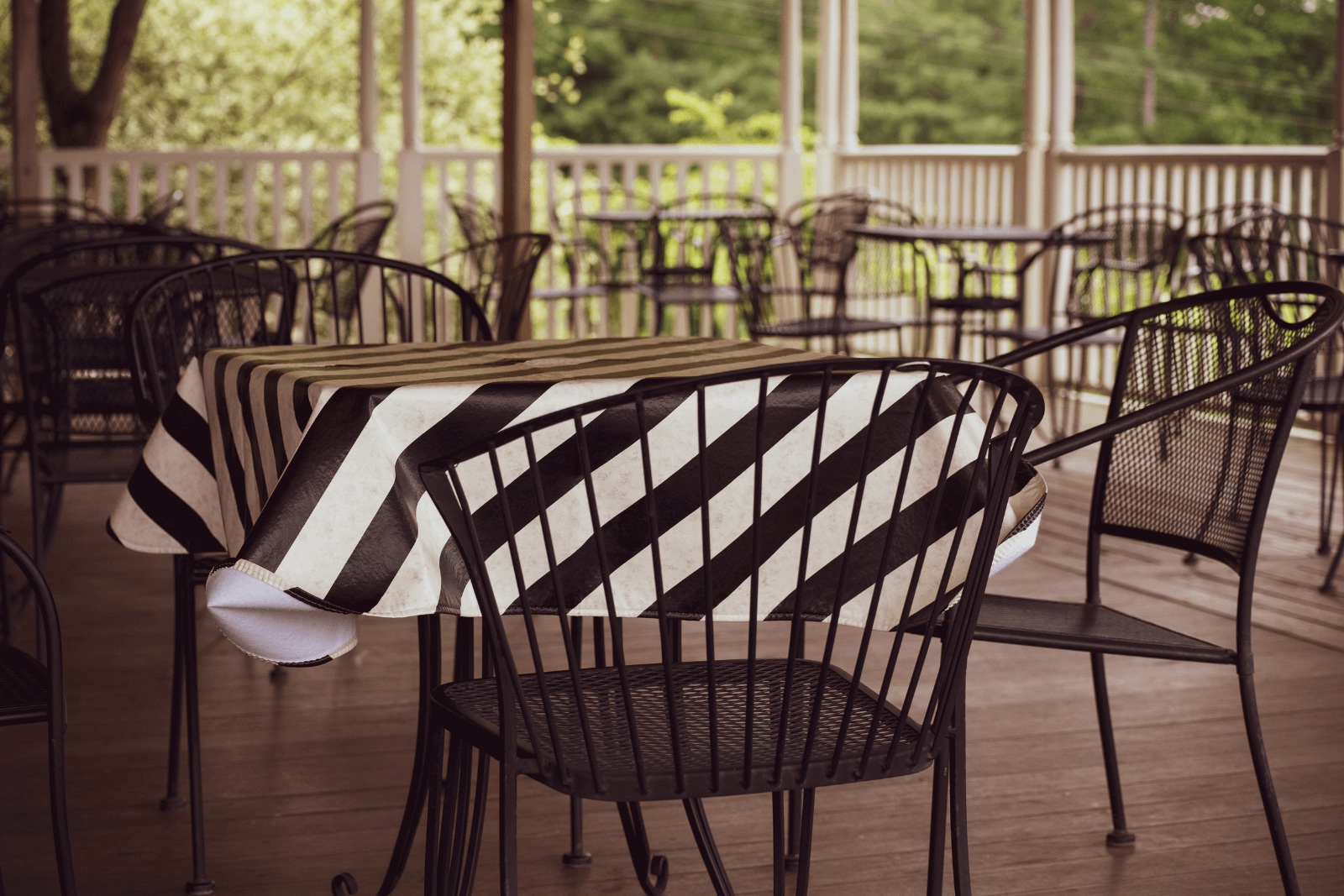Harnessing the untapped power of your restaurant's capacity isn't merely about adding more tables.
Rather it's a complex puzzle where careful consideration and effective strategies need to be put into place.
Misplaced efforts can quickly devolve into disorganized chaos, reducing customer satisfaction and leaving potential revenue untouched.
But fear not, for this article is your guide to navigating the labyrinth of effective capacity management.
Throughout this article, we'll explore concrete strategies and thoughtful tips, arming you with the knowledge to transform your establishment and maximize your restaurant’s dining capacity.
Let's start with a closer look at one key practice, which is fine-tuning the design and layout of your seating arrangement.
Optimize Your Seating Arrangement
The seating layout of your restaurant can make or break your business, as an optimized floor plan is fundamental to boosting your capacity.
Your restaurant has a limited space that you can work with, so using it in the most effective way possible by making wise arrangement choices and adding more tables when appropriate is the key to seating the most guests.
While optimizing seating arrangements, there are factors that must be considered, such as the following:
- Size of tables
- Type of tables
- Available space for guests and staff to move around
- Guest comfort
- The overall layout
Consider the following example to illustrate the benefits of optimal seating arrangement.
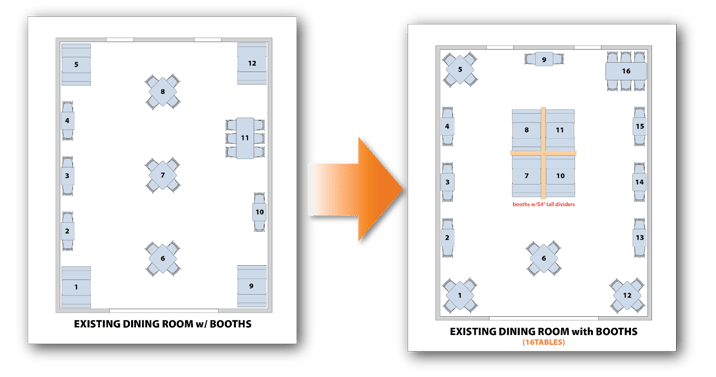
Source: Fastcasual
Here, we can see a restaurant floor plan before and after the booths were put in.
As you can see, by systematically reorganizing all the tables depicted in the first image, enough room was carved out for an extra four tables, elevating the count from the initial twelve to sixteen tables.
And this change can usher in a considerable revenue upswing.
Let's take a restaurant that operates with 12 tables where each table, on average, generates about $200 in revenue. That's a total daily revenue of $2,400.
Now, say we add four more tables.
If the added tables also generated roughly $200 per day, our new total daily revenue would be $3,200, which represents a 33.3% increase in daily revenue.
However, before we get caught up in a table-adding frenzy, it's worth noting that customer experience should remain a priority.
According to this comprehensive seating capacity guide, you should consider the space between the tables:
Each diner requires a minimum of 24” of space in terms of width. This will provide ample space between the chairs to allow customers to get in and out and sit in comfort.
Although this number is more like a guideline than a rule, focusing on comfort can help you avoid a cramped restaurant like the one shown below.

Source: BuzzFeed
This is an exaggerated example, but it’s not uncommon to see establishments with tables so tightly packed that neither the staff nor the customers can move freely.
Overall, balancing restaurant capacity and comfort is a tricky business.
While more tables may mean higher revenue, overdoing it could end up spoiling the dining experience and drive customers away.
Set Time Limits for Tables
You can have the most optimal table arrangement in your establishment, but your capacity can still be low if guests occupy the tables for too long.
Setting time limits can be a great way to combat this issue and increase your table turnover rate, meaning more guests can be served, and you can generate higher profits by efficiently utilizing your available seating capacity.
Surprisingly enough, most diners seem to be on board with this idea. Just take a look at the data in the following graphic.

Illustration: Tablein / Data: Gothamist
The data suggests that almost two-thirds of your patrons will also be likely to accept reasonable time limits, especially during peak hours.
But how long should you set the dining time limit?
To help you with your decision, review the graph below, showing the results of a survey that asked participants to express their opinion on the appropriate dining time.
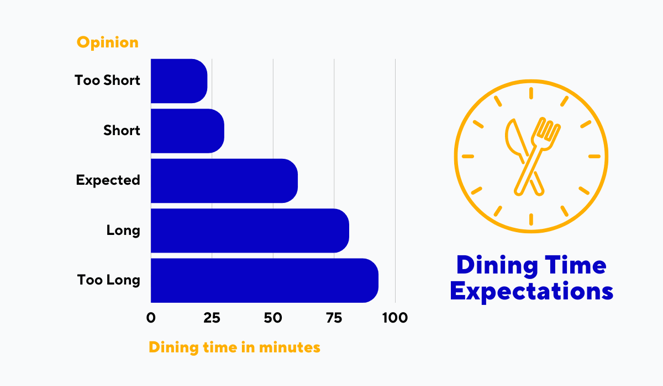
Illustration: Tablein / Data: Core
Of course, the exact numbers might fluctuate based on the region or the specific clientele of your establishment.
Therefore, every restaurant owner must keep a watchful eye on their customers' dining time and be in a better position to set reasonable and appropriate time limits.
For instance, you can find that the average dining time for your guests is around 80-90 minutes, and set a time limit policy similar to the one illustrated below.
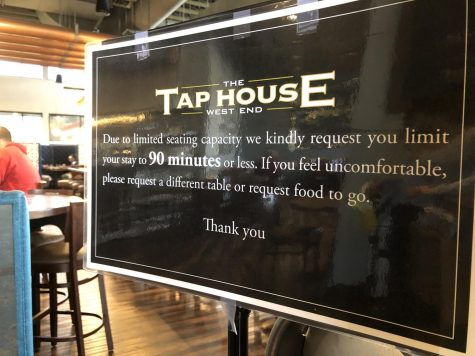
Source: The Advocate
Taking a leaf out of The Tap House's book, such policies should be strategically displayed in highly visible locations within your restaurant and on your website.
This ensures that guests are fully aware of your dining time policy well in advance.
Moreover, remember that the appropriate time limit can also vary drastically between different types of eateries, as shown in the image below.

Source: Reddit
In the more fast-paced setting of a fast food restaurant, a time limit of 30 minutes, like the one in McDonald's policy, might be the way to go.
That way, if your eatery is oriented towards convenience, you can set a shorter time limit to ensure you are turning tables at a fast rate.
Tread lightly when implementing these time limits, so you ensure your guests never feel rushed, as a pleasant dining experience should always take center stage.
Avoid Serving Incomplete Parties
We’ve discussed optimizing your layout and setting time limits on seated guests, but what should you do when an incomplete party wants to be seated at their booked table?
Though it might sound counterintuitive, seating and serving just a few members of a larger party can hamper your efforts toward enhancing table turnover and hinder your restaurant's capacity.
Seasoned restaurant owner, Justin Abad, shares some real-world insights about this topic in a Washingtonian article.
He mentions that when the full group isn’t seated at a section, servers must repeatedly return to each table as new members arrive.
This situation not only interrupts their workflow but also leads to inefficiencies. He continues by saying that this process takes a lot of time, stating the following:
By the time the parties are complete, and the section is full, those tables were supposed to be complete 30 minutes ago. So now we can’t pace and fulfill the experience the restaurant is going for.
This sentiment is echoed by a waitperson who detailed their frustrations in this Reddit post.

Source: Reddit
Clearly, as inferred from the post, serving incomplete parties is detrimental to both the restaurant’s operations and the waitstaff who could have efficiently catered to more tables, elevating the dining experience and overall restaurant capacity.
Given what we discussed above, it's advisable to implement a policy against seating incomplete parties, similar to what Up Thai did, as shown in the next policy displayed on their doors.
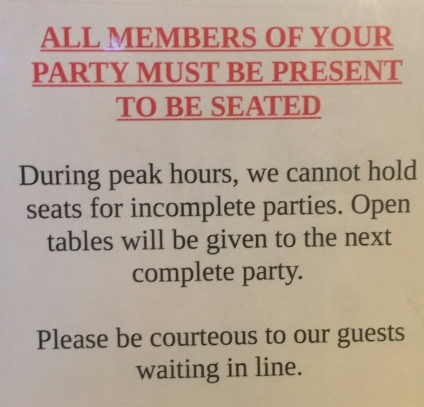
Source: TripAdvisor
Notice how this policy smartly includes the phrase "during peak hours," suggesting that during less busy periods, the staff could be more accommodating.
In any case, if you decide on implementing a similar policy, you should not overlook the guests waiting for the rest of their party, and ensure you have a separate waiting area that takes into account the following aspects:

Illustration: Tablein / Data: ZIPhaccp
A little entertainment, like a TV or some reading material, and comfortable furnishings can make all the difference in creating an excellent first impression.
Plus, assigning a staff member to talk to waiting guests and provide updates about their table status can make them feel valued.
So, through a well-communicated policy and certain practices in place, you can avoid the problems of incomplete parties while still allowing for a pleasant customer experience.
Train Your Staff to Provide Efficient Service
The efficiency of your restaurant is often a reflection of your staff’s performance, highlighting the importance of adequate staff training.
In a thriving restaurant, every staff member plays a vital role, with specific duties and responsibilities.
By establishing some clear roles and providing training for them, you can enhance workflow efficiency and elevate the quality of service.
This results in increased capacity for your restaurant and heightened satisfaction among your patrons, ensuring a seamless dining experience.
In the previous section, we mentioned designated staff members whose job is to communicate with guests in the waiting room.
However, this is just one of the restaurant roles you need to consider.

Source: Posist
The image above displays the diverse range of roles within a restaurant.
Each role contributes to the overall operations, whether the executive chef overseeing culinary creativity, the waitstaff ensuring customer satisfaction, or the cleaning crew maintaining a pristine environment.
Once you've identified the right organizational structure for your establishment, the focus should shift to implementing effective employee training so everyone knows their duties.

Source: LearnWorlds
The most direct training method is the instructor-led approach.
Here, you, or an experienced team member, impart the necessary knowledge to new staff, aiming to streamline their workflow.
Alongside your instructions, a detailed operational manual or guide can provide constant directions for staff.
For example, the waiter's section might include the following guidelines to facilitate table turnover:
- Greet and hand guests the menu as soon as they’re seated
- Take orders within 2-3 minutes
- Communicate the order with back-of-house staff immediately
- Prepare the bill in advance
- Clear tables within 1-2 minutes after guests leave
To provide insights to staff members into how these tasks are performed in practice, you can consider implementing shadowing.
This highly effective technique involves a junior staff member observing how a more experienced employee works.
Ultimately, your staff’s skill and efficiency are what optimize your restaurant operations, so providing adequate training is a crucial practice you need to consider.
Start Using a Table Booking System
Our final tip for improving your restaurant's capacity is to utilize the features of a modern booking system to enhance your workflow.
Online table booking systems provide a digital way of tracking and managing your restaurant operations with a variety of features enabling efficient reservation and waitlist management, automating communication between you and your guests, and much more.
Consider the first tip we mentioned in this article about optimizing your seating arrangement.
What if, after reorganizing your restaurant’s space, you needed a digital tool to manage the newly optimized layout efficiently?
That’s precisely what we show in the next image.
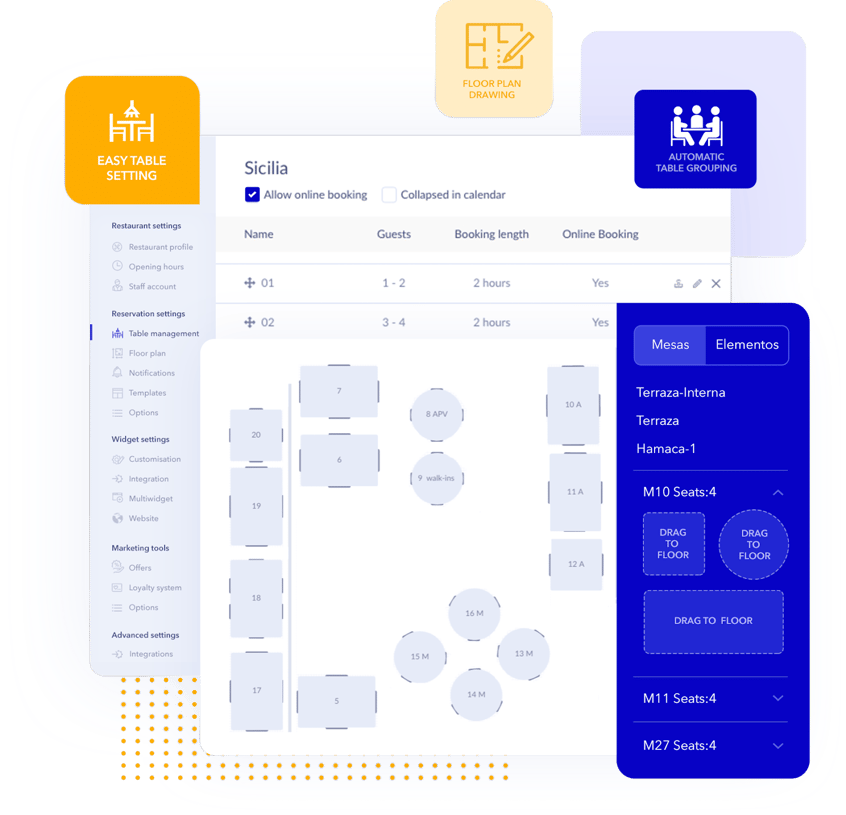
Source: Tablein
The image above showcases one feature of our tool, Tablein, a restaurant reservation system designed for simplicity and ease of use as a primary focus.
The table floor plan feature shown allows you to quickly set up the arrangement of your restaurant's seating area.
The intuitive design lets you add different table types to your floor plan with a simple drag and drop.
Once you've set up your digital floor plan, staff can quickly have an overview of reservations.
This overview is made incredibly intuitive with Tablein's helpful color-coding system.
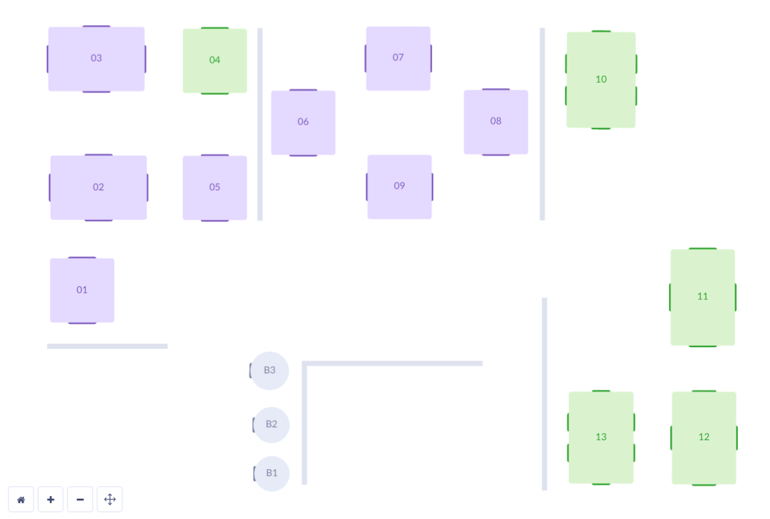
Source: Tablein
In the image above, the tables shown in green are booked, while the violet ones are set aside for walk-ins.
Any available tables would be gray, and if the management wanted to block any of the tables, those would be marked in red.
Visual cues like these allow for swift decision-making, complementing the staff training you’ve already put in place.
Staff can identify newly seated guests, pinpoint reserved tables, and discern which tables are available for walk-ins, all from an intuitive glance at the floor plan.
But this feature is just one of the many capabilities offered by our tool.
Take a look at Tablein’s capability to generate various reports and analytics, which is illustrated in the following screenshot.
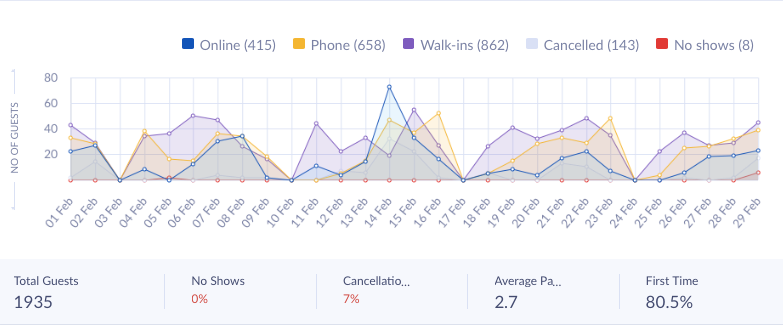
Source: Tablein
Let's say you want to measure the impact of the time limit and incomplete party policies.
Simply pull the statistics from the relevant period, generate a report in seconds, and voila!
You get comprehensive data about the total number of guests, walk-ins, and more.
This level of information is invaluable, allowing you to check whether your policies have made your operations more efficient and allowing you to make data-driven decisions in the future.
To conclude, a table booking system like Tablein is not simply a convenient option you can explore but is an indispensable tool for optimizing your restaurant's capacity.
Conclusion
As we conclude this journey of maximizing restaurant capacity, we’ve touched upon various strategies, from optimizing seating layout and sharpening staff skills to implementing pragmatic policies and harnessing the power of modern booking systems.
Hopefully, these insights have armed you with practical, actionable ways to ensure every table at your restaurant is utilized as efficiently as possible.
Armed with this knowledge, you're prepared to increase your seating capacity and elevate your customers' dining experience in the process.
Remember, more than a numbers game, capacity optimization is about balancing efficiency, comfort, and profitability.
Now, take this knowledge, put it into practice, and watch your restaurant flourish like never before
Get a 30-day Exclusive Trial
As a Tablein blog reader, you’re eligible for an exclusive 30-day free trial to experience our simple reservation solution for your restaurant.
Enter your business email, and we’ll send you all the steps needed to create your account.
Share this
You may also like

The Full Guide to Restaurant Reservation Confirmation Emails

How to Create a Restaurant Revenue Management Strategy
